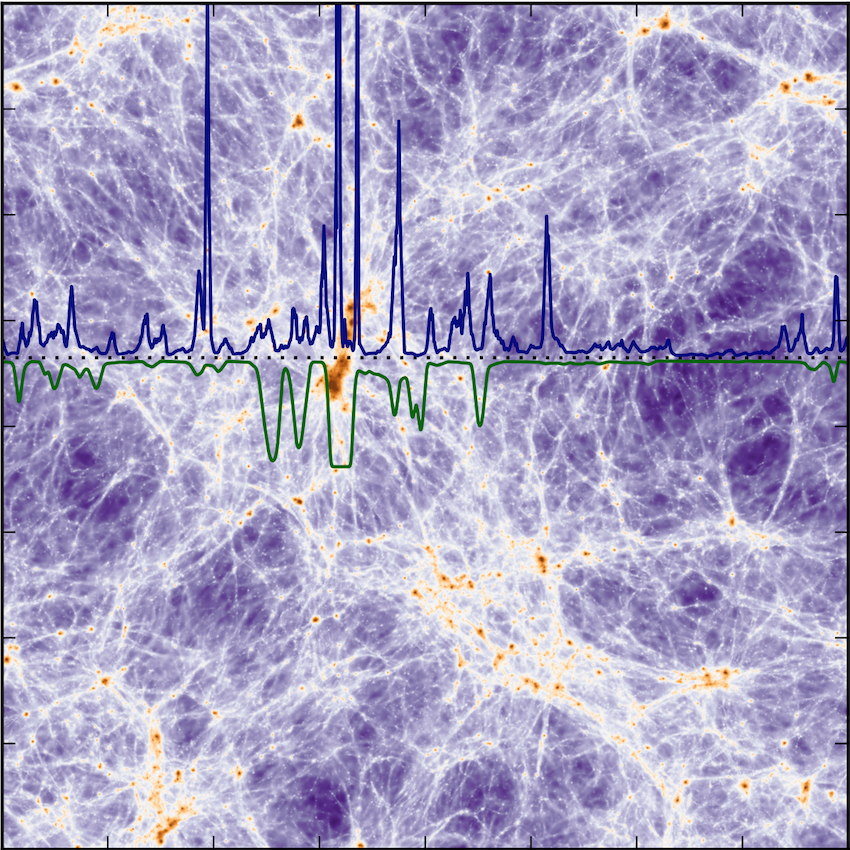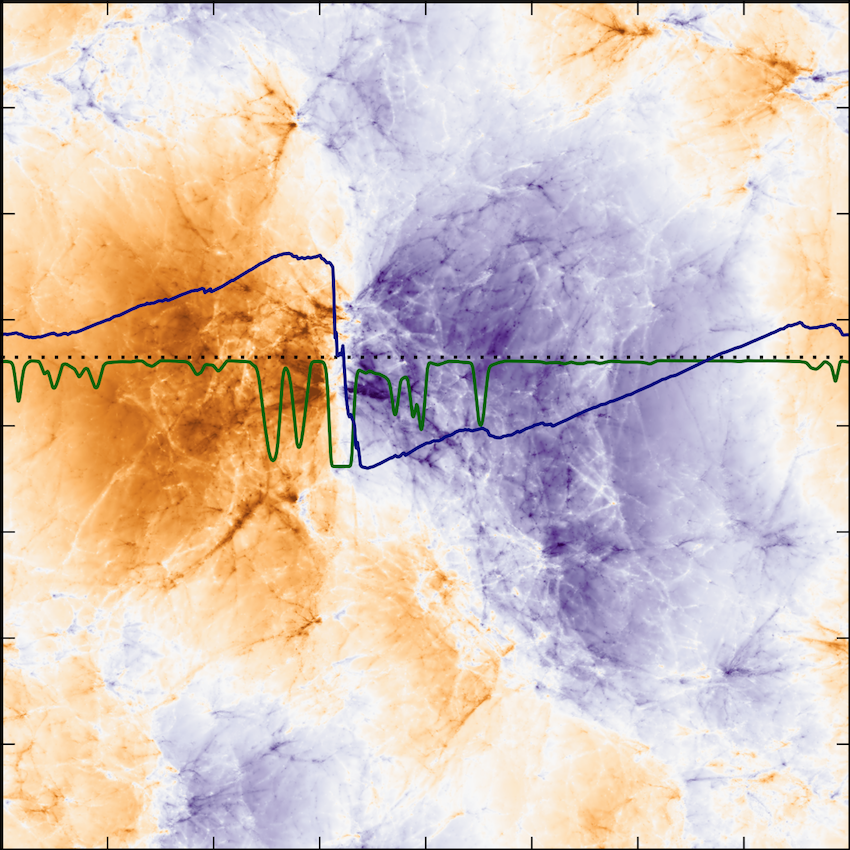The intergalactic medium (IGM) is the rarefied material that
spans the vast distances between galaxies in the Universe. The
IGM straddles the interface between studies of galaxy formation
and the evolution of large scale structure, and its observable
properties are closely intertwined with both. One of the key
observational probes of the IGM is
the
Lyman-alpha forest of hydrogen absorption lines observed in
the spectra of distant
quasars. In the
forthcoming decade, thirty metre class telescopes such as the
E-ELT
equipped with high resolution echelle spectrographs, coupled
with huge numbers of low-to-moderate resolution spectra from
large scale quasar surveys, will open up new vistas on the IGM and
the Lyman-alpha forest. These facilities and surveys will enable
access to fainter, more numerous background quasars, and will probe
the IGM transverse to the line of sight with densely packed
background sources.
Critical to all these programmes are high fidelity models of the
IGM. These are required for forward modelling the observational
data and facilitating (model-dependent) constraints on
quantities of cosmological and astrophysical interest. Careful
comparison between detailed hydrodynamical simulations of the
Lyman-alpha forest and quasar spectra have yielded valuable
insights into the coldness
of
cold
dark matter, the epoch of reionisation and the interplay
between galaxies and gas in the early Universe.
A drawback of existing numerical models, however, is their
narrow dynamic range. Highly resolved simulations are essential
for quantitative comparison to observational data. Large scale
variations and rare objects, such as massive dark matter haloes
and deep voids, are often not well captured in existing
simulations. This limits the utility of these models when
confronted with observational data, and requires corrections to
be applied to the simulation results. The Sherwood simulation
project aims to alleviate these issues, by bridging the
important gap between small and large scales.
The two images above show the gas density (left panel) and
peculiar velocity along the horizontal axis (right panel) in one
of the Sherwood models at redshift z=2, around 3.3 billion years
after the Big Bang when the Universe was 24 per cent of its
current age. The simulation consists of 17.2 billion dark
matter and gas particles that have been evolved under the
influence of gravity. Each image is around 64 million light
years (40 comoving Mpc/h) across. Blue shading indicates low
densities or negative velocities (gas that is moving toward the
left of the image), whereas orange shading corresponds to high
density regions or positive velocities (gas that is moving to
the right).
Neutral hydrogen that traces this web-like distribution of gas
is responsible for the absorption lines observed in the
Lyman-alpha forest. This is illustrated by the horizontal
dotted line, which marks the location of the line of sight
corresponding to the mock Lyman-alpha absorption spectrum shown
in green. The superimposed blue curves display the corresponding
gas density and peculiar velocity along this line of sight.
Note the large scale motion of the gas arising from
gravitational infall around the high density regions.
The Sherwood simulations were performed with a modified version
of the cosmological smoothed particle hydrodynamics code
P-Gadget-3, developed
by
Volker Springel. P-Gadget-3 is an updated and extended
version of the publicly
available
Gadget-2
code. The 15 million hours of supercomputer time used to run the
Sherwood simulations was awarded through
the
PRACE (Partnership
for Advanced Computing in Europe) 8th regular access call along
with support from the UK's
DiRAC (Distributed Research
using Advanced Computing) facility. Funding was also provided
by
The Royal Society,
the
Science and Technology
Facilities Council (STFC) and the
European Research Council
(ERC). For further details, please refer to the Sherwood
project overview paper,
Bolton et al. 2017, MNRAS, 464, 897

